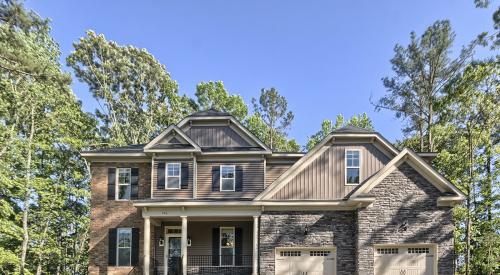More than anything, Wall Street’s love is for Lennar’s land holdings in California. The firm swooped into that massive housing market during the long, mid-1990s recession and picked off the assets and management team of bankrupt Canadian giant Bramalea Ltd. From that base, Lennar president Stuart Miller, 41, (who took over day-to-day leadership of the company from his father, founder Leonard Miller, in 1997), CFO Bruce Gross, 40, and western region president Jon Jaffe, 39, invested more than $1 billion in California land positions that now total over 50,000 lots. With the California economy recovering and local housing markets burgeoning with pent-up demand, those lots are now worth way more than Lennar paid for them.
Nationally, Lennar continues its focus on entry-level and first move-up segments of the Sun Belt markets stretching from Florida through Texas and into Arizona, Nevada, and California. But the firm has a new strategy to counter competitors’ widespread emphasis on customization--and the selling of high-margin upgrades and options through elaborate design centers. Lennar is pushing to keep its costs--and prices--below those of competitors by building relatively simple houses and including all the options buyers really want in the base price.By limiting changes, Lennar plans to build better houses faster.
PROFESSIONAL BUILDER: What advantage do you hope to gain from your ‘everything’s included’ approach to pricing?
Stuart Miller: We’re trying to simplify all our systems and perfect our delivery process as much as possible--to deliver more value to the customer. More bang for the buck.
What that gives us is the simplest company in the industry to run--from where we build, to what we build, to how we build it.
But you’re not selling stripped-down houses?
Bruce Gross: Not at all. We give the customer better value, and we get a simpler process. But we do extensive consumer research to identify the upgrades our buyers most want to see.
Stuart Miller: What we want is for home shoppers to walk into one of our models and say, ‘This is it. This is perfect. I wouldn’t change anything, even if I could.’
Isn’t that approach a tougher sell for your sales people?
Stuart Miller: There are a lot of ways to appeal to buyers. This is not tougher; it’s just different. We’ll get the buyers who are more interested in value for the dollar invested than in putting their own distinctive mark on a home.
This really puts a big burden on getting the right answers from research, doesn’t it?
Stuart Miller: No question. If we don’t do good research, we’ll end up including a lot of stuff people don’t care about and not including those things that people really want. If we do that, and don’t allow custom changes, we’ll have trouble selling.
So you’re not just a price-per-square-foot builder?
Stuart Miller: Well, price per square foot is still very important to our buyers. That’s one of the things our research shows. Because we simplify our processes and keep our overhead low, we’re able to keep our costs lower—and use that reduction as the mechanism to provide some of the desired upgrades in the base price. We have the price per square foot we need.
How important is this ‘everything’s included’ approach to your operations in California?
Jon Jaffe: Very. In California today, the trend is toward very elaborate design centers, staffed by option coordinators to support incredible customizing offerings. So we are going against that trend with ‘everything’s included.’ But we’re not turning back the clock to the old California--where builders said, ‘Here’s what you get. Take it or leave it.’ If the first person in line didn’t take it, the next one would.
We know we have to meet customer desires. We’re just trying to find a more efficient way to do it than dealing with hundreds of custom change orders. We believe we can anticipate what they want.
How do you do the research?
Jon Jaffe: Mostly in-house. But we do have a marketing consultant on retainer to help us. We do out-source some market studies on a community-by-community basis. We also do extensive surveying of customers--both those who buy from us and those who don’t. One of the most obvious things we do is look at what people pick. If any builder goes through his contracts, he’ll find a clear indication of where people are headed by analyzing what options are chosen.
Will the California market ever regain its former glory?
Jon Jaffe: The market demand is there, but California is so constrained by tough entitlement processes and labor shortages that it may not be possible. In the recession, we lost a lot of workers to Phoenix and Las Vegas. Those markets continue strong, so the workers have not returned.
Your recent growth in California, and across the nation, has come primarily through acquisition of local home builders. Do you see that continuing?
Stuart Miller: We view ourselves as a growth company, one with a great platform to be a consolidator in the current concentration movement in the housing industry. The market seems to be saying that bigger is better. Large-cap public builders seem to be in a very advantageous position right now. We want to stay at the forefront of that large-cap group. There are rewards for that in the capital markets. The question is whether these companies can develop systems, management, and operations to make bigger better for customers.
What are your projections for 1999 revenues and closings?
Bruce Gross: We’ve been telling Wall Street that we expect to hit 12,500 closings in 1999, for home building revenues of $2.6 billion. Of that total, $1.2 billion will come from 4000 closings in California.











